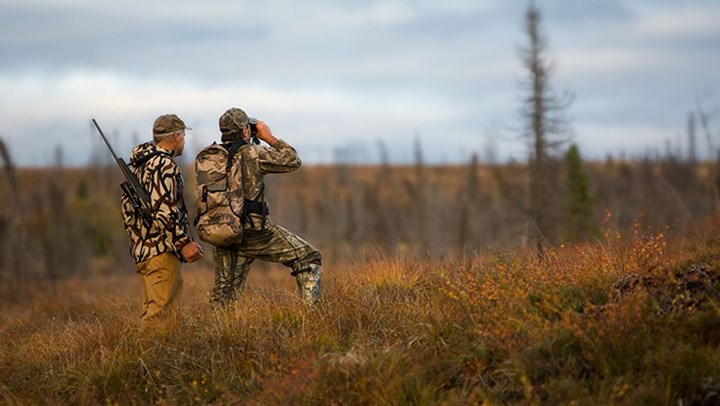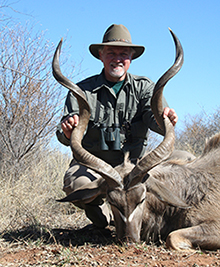
by Chris Chaffin - Monday, December 11, 2017

In a hierarchy of obvious truths about hunting, axiom one is: You can’t hunt if there is no game. Axiom two is: You can’t hunt if you don’t have a place to hunt. Both have a direct and dynamic bearing on the future of hunting. Without both, we don’t hunt.
The abundance of game is a daily priority of wildlife management agencies, conservation organizations, hunter’s organizations and clubs, etc. While conservation challenges remain significant—and growing—making certain there are places to hunt has received more emphasis in recent years.
Broad efforts to provide access to hunting land run the gamut from organized leased-land programs, to securing access through private lands to public hunting areas, to negotiating conservation easements and giving game permits to private landowners who allow public hunting on their land. Ranchers and farmers—many of whom are hunters themselves—are also working with state wildlife agencies to provide places to hunt through Private Land Access programs, commonly referred to as Walk-in Areas (WIA).
These programs are beneficial to sportsmen and women by providing new access to previously closed lands and clearly contributing to current efforts to recruit, retain and reactivate (R3) hunters. WIA programs are also designed to provide meaningful benefits to involved landowners through incentives such as payments for land use, tax benefits, reduced fees for hunting and fishing licenses and liability protection.
Going back to the late 1980s, wildlife agencies in a number of midwestern states initiated programs designed to permit hunters and anglers access to private lands. For example, South Dakota’s WIA program enrolled more than 1.2 million acres for hunting and Wisconsin’s Managed Forest Law program allows access to privately-held forest lands.
Plain and simple, WIA programs work. Mark Norton, South Dakota Game, Fish and Parks Hunting Access and Farm Bill Coordinator, said the state’s goal is to provide 290,000 “user-days” each year, which they have met or exceeded over the past five years. A 2015 evaluation survey revealed that 98 percent of participating hunters reported they would hunt these areas again and 73 percent were satisfied with the state’s WIA program.
“Looking ahead,” Norton said, “we just completed a plan that calls for us to add 200,000 acres, including ‘undisturbed habitat’ such as Conservation Reserve Program (CRP) land to the program.”
Kansas Department of Wildlife, Parks and Tourism (KDWPT)—an early adopter of the WIA program—has maintained over one-million acres in its program since 2004. Both landowners and hunters are satisfied with the program, which was specifically designed to remove road blocks for those who want to hunt. KDWPT also produces an abundant amount of ongoing outreach materials such as maps and atlases to help hunters identify accessible lands and is continually looking to add new land and opportunities.
KDWPT Private Lands Coordinator Jake George revealed that the WIA program resulted in development of additional hunting opportunities like the Special Youth-Mentored hunts that take place on private property but are available only through online applications and special drawings. “Some landowners are more comfortable with this more controlled-access approach,” said George. He noted that the future is challenging due to the hundreds of thousands of acres now under contract that are set to expire in the next three years. “We are working to procure long-term agreements that will provide continuous participation and incentives to landowners,” said George, indicating that CRP land is vital to their access initiatives.
The following midwestern states have similar WIA programs:
• Iowa: Habitat and Access Program (IHAP)
• Minnesota: Walk-In Access Program (WIA)
• Missouri: Outdoor Recreational Access Program (MRAP)
• North Dakota: Private Land Open To Sportsmen (PLOTS)
• Nebraska: Open Fields and Waters Program (OFW)
• Oklahoma: Land Access Program (OLAP)
• Texas: Annual Public Hunting Permit Program (APH)
It’s well documented that private lands hold quality game populations and habitat, making these public-private partnerships a valuable asset for hunters. Establishing and expanding WIA-type programs have clearly demonstrated their value. These programs are worth using and protecting. One of the key components of keeping successful WIA programs alive is hunter behavior. The landowner’s willingness to work with agencies and hunters to provide access must be met with the highest degree of hunter safety, ethics and respect for the land and the landowner’s expectations and requirements.
Public access programs that provide hunting opportunities on private lands will undoubtedly play an important role in the future of our beloved hunting heritage as societal challenges and land-use changes affect traditional hunting areas. To their own benefit, hunters should seek to be informed about and active in developing more programs that promote hunting partnerships with private landowners.
■ ■ ■
About the Author
Chris Chaffin has been an outdoor communicator, educator and partnership manager for more than 40 years. He has worked on the national scene representing several prominent components of the outdoor community promoting hunting, fishing, the shooting sports and conservation. He served two terms as Treasurer for the Professional Outdoor Media Association (POMA), eventually taking on roles as vice-president, President and Chairman of the Board.

In 2007, he launched Chaffin Communications, Inc., a communications consulting company focusing on the outdoors. In 2012, with support from the Outdoor Adventure Dream Giveaway, Chaffin founded and currently manages the Outdoor Adventure Conservation Fund, a Florida non-profit established to encourage and facilitate more people participating in traditional outdoor activities. For more information, click here.
E-mail your comments/questions about this site to:
[email protected]
Proudly supported by The NRA Foundation and Friends of NRA fundraising.
